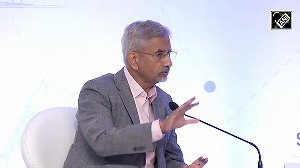
Gamification is helping companies transform and enrich the learning experience of employees, reports Sangeeta Tanwar
It’s a truism that when learning is fun and engaging, you get more out of learners.
And companies realise that fun and games are serious business, which is why they are increasingly embracing gamification to enhance the learning and talent development programmes of employees.
Gamification has the potential to trigger immediate positive responses to learning that an organisation wishes to impart.
According to Kamalika Mitra, engagement manager, Tata Strategic Management Group, it aids learning by generating stronger and more engaged responses due to an element of “added fun” in the training.
This has a positive impact on completion rates, as it lowers “dropout” rates.
Lastly, gamification helps in quantifying the immediate return on investment in the training programme, as games help demonstrate quantified levels of the exact extent of learning imparted.
Agrees Nishit Sood, founder and chief executive officer, YOMA Multinational Solutions LLP, “Gamification turns complex tasks into simple milestones, reducing the complexity around learning and increasing productivity among employees.”
Gamification uses positive conditioning to reinforce vital behaviours in the form of badges, points and rewards.
Therefore, in a fast-evolving workplace landscape dominated by millennials -- where normal is boring and change is the new normal -- “gamification helps liven up the atmosphere and provide innovative approaches to contextualise, engage and connect”, points out Shalini Pillay, partner and head of people, performance and culture, KPMG India.
For instance, KPMG uses gamification to drive critical skills and encourage team bonding. It recently ran an online treasure hunt enabling the participants to know more about its service offerings and armed them with details of various member firms.
At Mondelez India, the impetus is on developing the business acumen of employees through virtual gaming and e-learning programmes.
The firm has rolled out a virtual game, “PerfectStore Superstar”, where employees manage a virtual store.
They are encouraged to use shopper insights (5S) -- see, scan, spot, show interest and select -- to drive sales.
The game empowers employees to lead their own stores and trains them to manage budgets and mitigate disruptive activities.
This programme not only brings all the members of the company together, but also helps them focus on the roles each has to play in the product journey.
Tata Consultancy Services is big on gamification.
It uses its gamified platform, Campus Commune, to enhance the learning experience of employees.
For instance, if an employee is interested in gaining expertise in assurance (that is software testing), she can learn it through Campus Commune.
The employee has access to content on assurance and other subjects through this platform and can learn about a new product or service.
For Vasudevan Rajagopalan, head of talent acquisition at TCS, gamification is a great tool to transform the learning experience of a person with the available content.
“Most of the times people don’t have interest in sitting through a daylong training programme.
Also, if the trainer fails to hold employees’ attention, chances are that the learning exercise will turn into a negative experience,” says Rajagopalan.
He adds, “And this is why a gamified experience plays an important role in imparting learning to employees in a more engaging and non-intrusive manner.”
Xerox has embraced gamification to better engage trainees and to combat high turnover. Xerox Corp. (globally) uses an app called Qstream -- a trivia game that allows employees to answer several questions and compete with each other.
The questions are designed to provide and instil best practices in employees. Similarly, at DBS, the management uses interactive game-based toolkits to increase awareness and usage of key systems and processes including anti-money laundering and know your customer.
“This is a critical training for employees. Gamification helps us share the nuances of understanding KYC with the staff,” claims Kishore Poduri, head, human resources, DBS Bank India.
HDFC Life, too, uses gamification for competency and functional training.
As part of its Easy Health product awareness campaign, the company created two-minute-byte-sized learning snippets and quizzes on mobile devices. A series of comic strips was launched to create awareness.
At Infosys, a gamified platform called “Accelerate” has been designed to get more people deployed on productive work.
Employees post modular work on Accelerate, based on their project requirements.
It has a cricket-theme based leader board, too.
“The main objective of ‘Accelerate’ is to ensure every individual is actively contributing to organisational goals by opening up opportunities for short-duration projects (client and internal works),” says Richard Lobo, senior vice-president and head-HR, Infosys.
Besides aiding learning, gamification also helps firms to promote competition and motivate employees.
For example, fashion discovery platform Roposo has deployed a gamification tool called JIRA, as part of which the technology team writes complicated queries to be solved by members.
Co-founder Kaushal Shubhank says, “We have released app updates via this tool and the transparency offered has raised productivity by shortening product cycles.”
Mphasis deploys gamification training in data security, code of business conduct and also in the area of contract research organisation.
“When we send messages about data security in terms of what you are allowed to do and what you are not, in traditional ways, not everyone buys it. But when you involve them in a game they are more receptive to receiving the same messages,” says Puneet Bhirani, chief people and administrative officer, Mphasis.
Meanwhile, Zopper deploys gamification through Local Hack, where participants are given 48 hours for problem solving.
Neeraj Jain, CEO, Zopper, says that with focus on innovation and ideation, the competition increases inter-departmental interactions and drives business objectives.
Similarly, nexGTv has adopted a simple yet effective approach to enhance the skill set of employees.
The technology team is tasked with learning a new skill within seven days through a hackathon.
“Such games give employees a constant sense of where they stand, and provide engaging challenges to improve their skill sets,” says chief operating officer Abhesh Verma.
One of the key reasons why businesses are drawn to gamification is that it’s scalable and a cost-effective way of skilling employees vis-a-vis material rewards and money, says Harishankar Karunanidhi, CTO of HackerRank, which offers competitive programming solutions to businesses.
Gamification has a sense of novelty for participants due to its ability to induce “fun as they learn”.
But it’s important to ensure that it continues to help companies to achieve business goals.
Therefore, asserts Rajkamal Vempati, head, human resources, Axis Bank, “steps must be taken to make the exercise exciting in an ongoing basis so that there is no sense of redundancy in the process and the participants continuously look up to different rounds”.
Managing a gamified programme demands a huge amount of resources and effort.
It shouldn’t be introduced for the sake of it, but with specific business objectives laid down.
Priyanka Kohli, lead, people operations, GreyOrange, concurs, “Gamification can’t drive the desired success if it’s used as a one-time activity.
It should rather be used as a sustained campaign to drive training and skill development objectives for the organisation.”
Even as gamification offers advantages, it has a few pitfalls.
Over-engaging and creating addictions may lead to learners “missing the trees for the woods” -- that is overlooking the learning part amid the high-decibel viral engagement associated with gamification, cautions Vibhash Naik, senior vice-president, learning and development, HDFC Life.
Most importantly, even as organisations pursue gamification they need to watch out for the quality and depth of the content and keep a lid on over-competitiveness.
Keep it simple and fair: Sushant Dwivedy
Despite its benefits, gamification initiatives can go awry.
So, watch out for the following:
- Lack of differentiation between behaviour and result: Achieving results is the ultimate goal for an organisation, but it’s essential for gamification techniques to be designed in a manner that encourages healthy competition among employees.
- Measuring the wrong metrics: It’s important to provide each audience with the relevant key performance indicators to their function. Managers need to monitor the impact of gamification on the bottom line. Performance metrics should be framed as a journey -- not “you are good or bad” but “this is where you are, and this is how far you need to go to reach the next level of performance.”
- Unfair competition: Overly ambitious targets turn gamification into a negative approach and can lead to employees being less motivated. It’s critical to design gamification elements as attainable and playable for employees of all experience and skill levels.
Sushant Dwivedy is Director, Global Document Outsourcing, Xerox India
Image: Children play computer games at a high-speed broadband internet cafe in Kolkata. Photograph: Jayanta Shaw/Reuters
The image is used for representational purpose only







